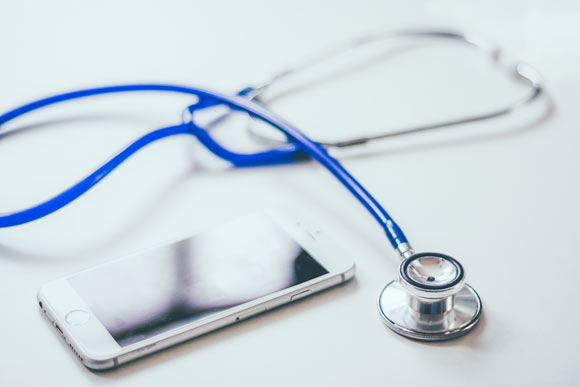A team of scientists at the University of Western São Paulo, Brazil, has found Staphylococcus aureus bacteria on nearly 40% of university students’ cell phones.

Improved cell-phone hygiene may lead to a reduction in infections associated with health care. Image credit: StockSnap.
“Surface contamination of students’ cell phones in the health field contributes to the dissemination of pathogenic microorganisms acquired in the community and/or hospital environment, which may result in a greater risk to their own health and to those of the patients they deal with,” said lead author Professor Lizziane Kretli and colleagues.
“The objective of our study was to evaluate the microbiological contamination of cell phones of university students.”
“Samples were randomly collected from 100 cell phones. Then tests were performed for the identification of Escherichia coli and Staphylococcus aureus, to evaluate the susceptibility to antimicrobials and formation of biofilms by these microorganisms.”
The samples were collected from cell phones of students from the biomedicine, pharmacy, dentistry, nutrition, and nursing courses.
The vast majority of the bacteria isolated belonged to students of the nursing course.
“Nursing students are very likely to become carriers of Staphylococcus aureus since clinical practice in hospital settings is part of their coursework and exposure to occupational hazards is inherent to this setting, which could favor the colonization and contamination of the surface of cell devices,” the researchers said.
About 85% of Staphylococcus aureus isolated were resistant to the antibiotic penicillin and 50% had the ability to adhere to surfaces.
In addition, the presence of genes related to adhesion, antimicrobial resistance and toxins were present a high level.
“Students in the health area attend practical classes and clinical stages where they have direct contact with samples, objects, and clinical environments containing pathogenic microorganisms,” the study authors said.
“Cell phones are an indispensable accessory in the professional and social life of a large part of the population. In the medical field they are considered an integral part of the life of health professionals and have improved communication, collaboration, and information sharing.”
“In this context, cell phones may thus serve as a reservoir of bacteria known to cause nosocomial infections and could play a role in their transmission to patients through the hands of health professionals.”
Professor Kretli and co-authors presented the results June 21 at ASM Microbe 2019, the annual meeting of the American Society for Microbiology, in San Francisco, CA.
_____
G.M. Souza et al. Dissemination of Methicillin-Resistant Staphylococcus aureus (MRSA) by University Student’s Cell Phones. ASM Microbe 2019, abstract # CPHM-903







